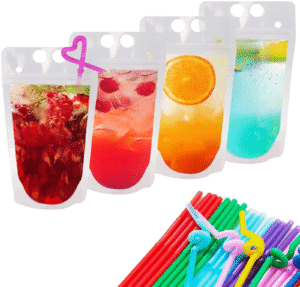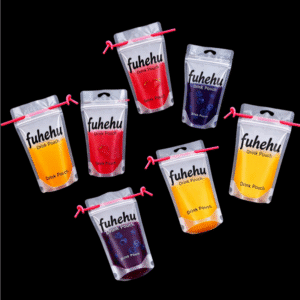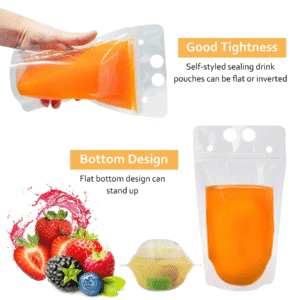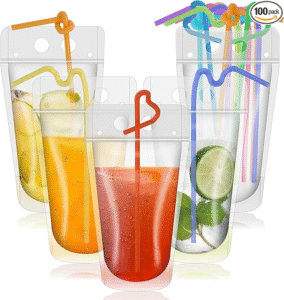Plastic drink pouches have become a common sight everywhere from school lunchboxes to sports fields. Brands like Capri Sun and many others have made them a popular choice for their convenience and fun factor. But what are the real pros and cons of this packaging, and how safe are they for our consumption?

The Advantages: Why They Are So Popular
The widespread use of plastic drink pouches is driven by several key benefits.
Lightweight and Portable: Their flexible design makes them extremely light and easy to carry. They take up very little space in a bag, making them ideal for on-the-go hydration for children and adults alike.
Durability and Leak-Proof Design: When intact, these pouches are highly resistant to leaking. The laminated layers of plastic and foil create a strong barrier, and the sealed design means they are less likely to spill compared to some other containers.
Cost-Effective: The manufacturing process for these pouches is generally inexpensive. This low cost is often passed on to the consumer, making them an affordable option for drinks.
Fun and Kid-Friendly: The bright colors and the unique experience of poking a straw through the hole are very appealing to children. Their single-serving size is also perfectly portioned for a lunchbox.

The Disadvantages: The Environmental and Practical Drawbacks
Despite their convenience, plastic drink pouches come with significant downsides.
Major Recycling Challenges: This is their biggest flaw. Most standard curbside recycling programs cannot process these pouches because they are made from multiple layers of different materials (plastic and aluminum foil) fused together. This complex structure makes them difficult and costly to separate and recycle, leading most to end up in landfills.
Potential for Litter:Their small, lightweight nature means they can easily become litter if not disposed of properly, contributing to plastic pollution in the environment.
Dependence on a Straw: You almost always need a single-use plastic straw to drink from them, which creates additional plastic waste. Furthermore, if the straw is lost, the pouch becomes difficult to use.
Risk of Punctures: While generally leak-proof, the thin material can be punctured if crushed or pierced by a sharp object, potentially ruining the contents of a bag.

Food Safety: Are They Safe to Drink From?
The food safety of plastic drink pouches is a common concern for many parents and consumers.
Material Safety: The plastics and aluminum foil used in these pouches are designed to be food-grade and are approved by food safety authorities in many countries, such as the FDA in the United States. Their primary purpose is to create an airtight, sterile barrier that protects the drink from outside contaminants, bacteria, and light, which helps preserve its freshness and shelf life without the need for refrigeration.
The BPA Question: Most major manufacturers have phased out the use of Bisphenol-A (BPA) in their packaging due to consumer demand. It is always best to check the manufacturer’s website or packaging for a “BPA-Free” label to be sure.
A Note on the Straw Hole: The area where the straw is poked through can theoretically introduce bacteria from hands or the environment. However, the risk is generally considered low for healthy individuals. It is advisable to wipe the surface with a clean cloth before piercing it and to consume the drink shortly after opening.

Conclusion
Plastic drink pouches offer undeniable convenience, portability, and affordability. However, these benefits are heavily weighed down by their serious environmental impact, primarily their difficulty in being recycled. From a food safety perspective, they are generally considered safe when used as intended, thanks to their sterile, sealed design. As consumers, being aware of both the advantages and the significant ecological cost can help us make more informed choices about the products we buy and how we dispose of them.
